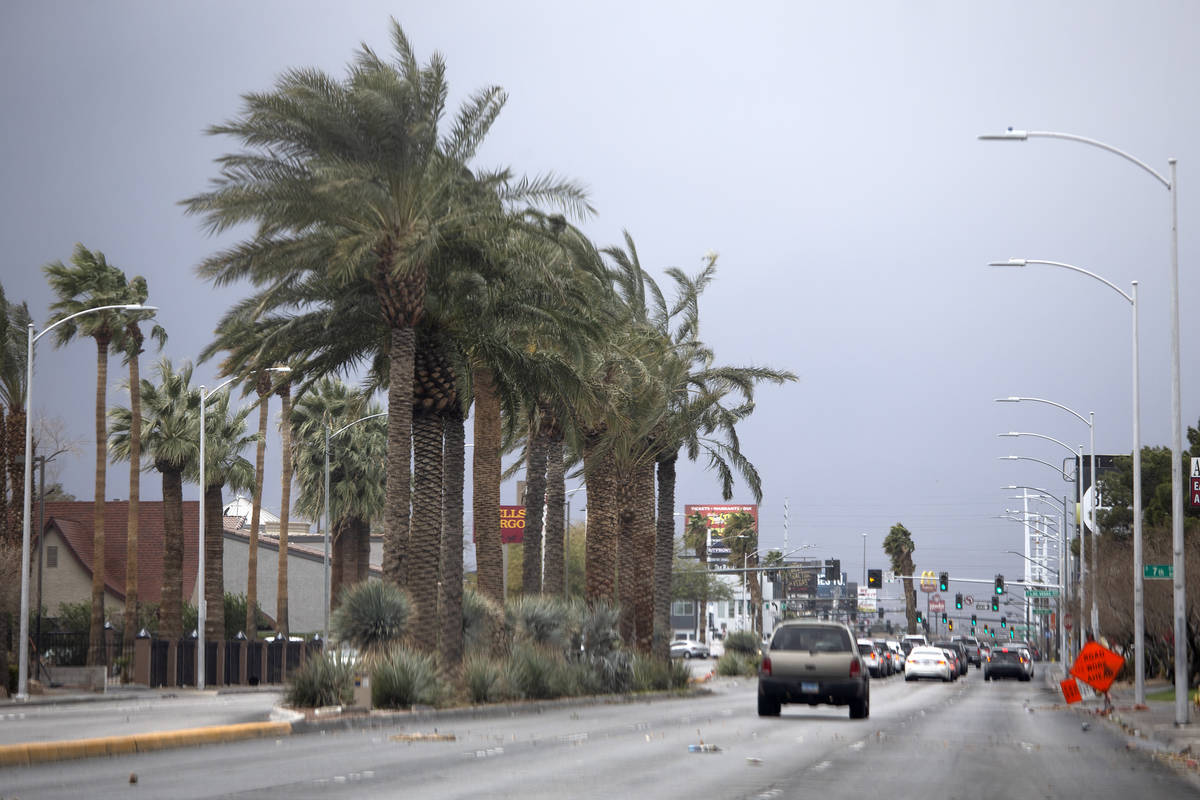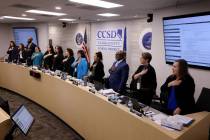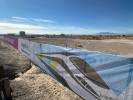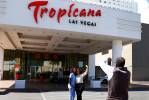EDITORIAL: Private funding would change calculus on mass transit
If a private company wants to finance light rail along Charleston Boulevard, local officials should take a look at the proposal. Just keep direct taxpayer financing off the table.
This month, the Las Vegas City Council approved an exclusive agreement with Axios Nevada LLC to negotiate and discuss a new transit project along Charleston. The agreement lasts for two years and doesn’t limit Axios to a specific type of transportation.
As the Review-Journal’s Mick Akers reported, Las Vegas Councilman Brian Knudsen said options include light rail, a tunnel system or solar-powered mass transit. In theory, the project would run from Hollywood Boulevard on the east side to downtown Las Vegas, the UNLV Medical District and on to a host of attractions in Summerlin in the west valley. The price tag is estimated at $2 billion to $3 billion for light rail. The project would be privately owned and operated.
Government planners have long been infatuated with mass transit systems. Many seek to separate people from their personal vehicles. Some of this comes from overwrought concerns about the environment. The theoretical efficiency of stuffing people into trains and buses also seems attractive to some bureaucrats. They often seem to view public sentiment as an obstacle to overcome rather than as the legitimate preferences of the people they’re supposed to serve.
These planners far too rarely test their assumptions. For instance, the Nevada Department of Transportation has long delayed producing data, if it even exists, showing local high-occupancy vehicle lanes have had their intended effect.
Mass transit ridership was falling nationally long before the pandemic. “Nationwide transit ridership has declined steadily since 2014, with some of the largest urban areas, including Atlanta, Miami, and Los Angeles, losing more than 20 percent of their transit riders in the last few years,” Randal O’Toole of the Cato Institute wrote in 2018. “While this recent decline is stunning, it results from a continuation of a century-long trend of urban areas becoming more dispersed and alternatives to transit becoming more convenient and less expensive.”
The decline comes even as the public sector continues to shower such projects with generous taxpayer subsidies. Mr. O’Toole notes that “federal, state, and local governments have spent well over $1 trillion on subsidies aimed at reversing transit’s decline” since 1964. It hasn’t worked. In addition, Mr. O’Toole concludes, “The supposed social, environmental, and economic development benefits of transit are negligible to nonexistent.”
To make matters worse, such projects are almost always oversold by proponents with inflated ridership and fare box projections and woefully underestimated cost estimates.
There are mass transit systems in the United States that make sense. New York’s subway system comes to mind. But the population density of New York City is more than 28,000 people per square mile as of 2016, according to Governing. Closer to home, San Francisco, with a population density of 18,581, also has a large rapid transit system. Las Vegas, with a density of 4,660 per square mile, is smaller and more spread out.
In a welcome moment of fiscal sanity, the Regional Transportation Commission in 2019 rejected a proposal for light rail along Maryland Parkway. The purported $750 million price tag — probably far higher — was too extravagant. The RTC went with bus rapid transit instead.
These are all reasons that state and local governments should avoid funding light rail. The failure of the Las Vegas Monorail should also loom large.
But if a private company wants to invest $2 billion in a transit system, that’s a different story. Local officials should listen. But taxpayers need to keep a close eye on this to make sure they don’t end up stuck with the bill.




























